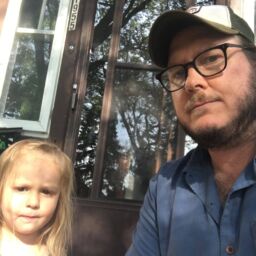In the aftermath of the May federal election, many Saskatchewan voters were justifiably surprised by the results. Despite garnering 32.3 % of the total provincial vote, the federal NDP was completely shut-out in our province. Conversely, the Conservatives - with a little over half of the popular vote (56.3%) - wound up winning 93% of Saskatchewan’s federal seats. To top it off, the Liberal Party’s lowly 8.6% of the popular vote still managed to secure Ralph Goodale his Wascana riding.
To put these results in perspective, let’s consider the raw numbers. The Conservatives won 13 seats with 256,004 votes. That comes out to 19,692 votes per candidate elected. The Liberals won a single seat with 38,981 votes. The NDP on the other hand garnered 147,084 votes with absolutely nothing to show for it.
Obviously our first-past-the-post electoral system and the gross distortions it creates is a prime driver of the disproportionality we witnessed this past election. However these results seemed so skewered that many are beginning to question how Saskatchewan has defined it’s federal electoral boundaries and whether or not a more equitable election result could be had by re-visiting these boundaries.
The configuration of Saskatchewan's 14 federal ridings is unique in Canada, with no stand-alone urban ridings. Despite our two largest cities - Saskatoon and Regina - having more than enough residents to create urban-only ridings, voters in both cities share their ridings with a significant rural population.
To visualize this, think of these rural-urban ridings as slices of pie, with the thin edge of the wedge covering the cities and the majority of the slice covering rural municipalities. To some political observers, these boundaries serve to bolster the Conservative vote while simultaneously undermining the Liberal/NDP vote which tends to concentrate in urban regions. According to University of Victoria political scientist Denis Pilon, "the results in Saskatchewan's elections suggest that something is terribly, terribly wrong." "The Conservatives are popular in Saskatchewan, no one should deny that,” Pilon stated in an interview with CBC News, “but their ability to turn their votes into seats is way out of line."
Pilon examined recent elections and found that, even though Conservative support ranged from 42 to 54 per cent of the vote in the province, the party's candidates captured 93 per cent of the seats — or 13 out of 14.Pilon says he believes the outcome is strongly linked to riding boundaries which include rural areas with urban. "It just so happens," Pilon said, "that most of the Liberal and NDP votes are concentrated in that urban area whereas the Conservatives are much stronger in the rural areas." "It allows the Conservatives to maximize their representation," he said.
The current boundaries are the result of the commission that sets Saskatchewan electoral boundaries and which is comprised of neutral experts. Saskatchewan-based political scientist David Smith has been a member of the boundaries commission himself, and told CBC News it is difficult to devise an electoral map that pleases everyone.If urban-only seats were created, he pointed out, "then we end up with gigantic [rural] seats." At one point a distribution of seats was prepared that included some city seats. However, Smith said when the commission held public meetings there was a strong negative reaction. "The unanimous opinion, public opinion was: No good," Smith said. "And we were told several times, several times, there is no such thing as an urban interest in Saskatchewan."
Urban voters in Saskatchewan’s major cities might disagree that their is no such thing as an urban interest. There is no doubt a variety of issues and concerns that would be exclusive to urban voters just as there would be to rural voters. For example, it is well documented that the demise of the federal gun registry was not welcomed with the same enthusiasm by urban voters as by rural ones. Moreover, issues such as poverty, service delivery, education and healthcare can have distinctly different causes and solutions depending on whether they are situated in a rural or urban setting.
Furthermore, the argument that rural-only ridings would be “too large” to represent does not hold much weight in our wired society where instantaneous communication is a commonplace. In addition, other provinces with substantial rural areas do not feel the need to incorporate urban centres into their rural ridings, as the enormity of Manitoba’s Churchill riding and Alberta’s Peace River riding attest.
The next opportunity to redraw Saskatchewan's federal riding boundaries will follow this year's census. In the interest of returning some measure of proportionality to federal election outcomes in Saskatchewan, we may want to slice the electoral boundary pie a little differently next time.
Simon Enoch is the Director of the Saskatchewan Office of the Canadian Centre for Policy Alternatives






